From our house we enjoy gazing at the North Peak of the Sandia Mountains. The North Peak is the tallest point in the photo below, reaching 10,447 feet. Sunsets over the crest of the mountain are gorgeous—on an average day. Then comes a stunning show, like last night’s:
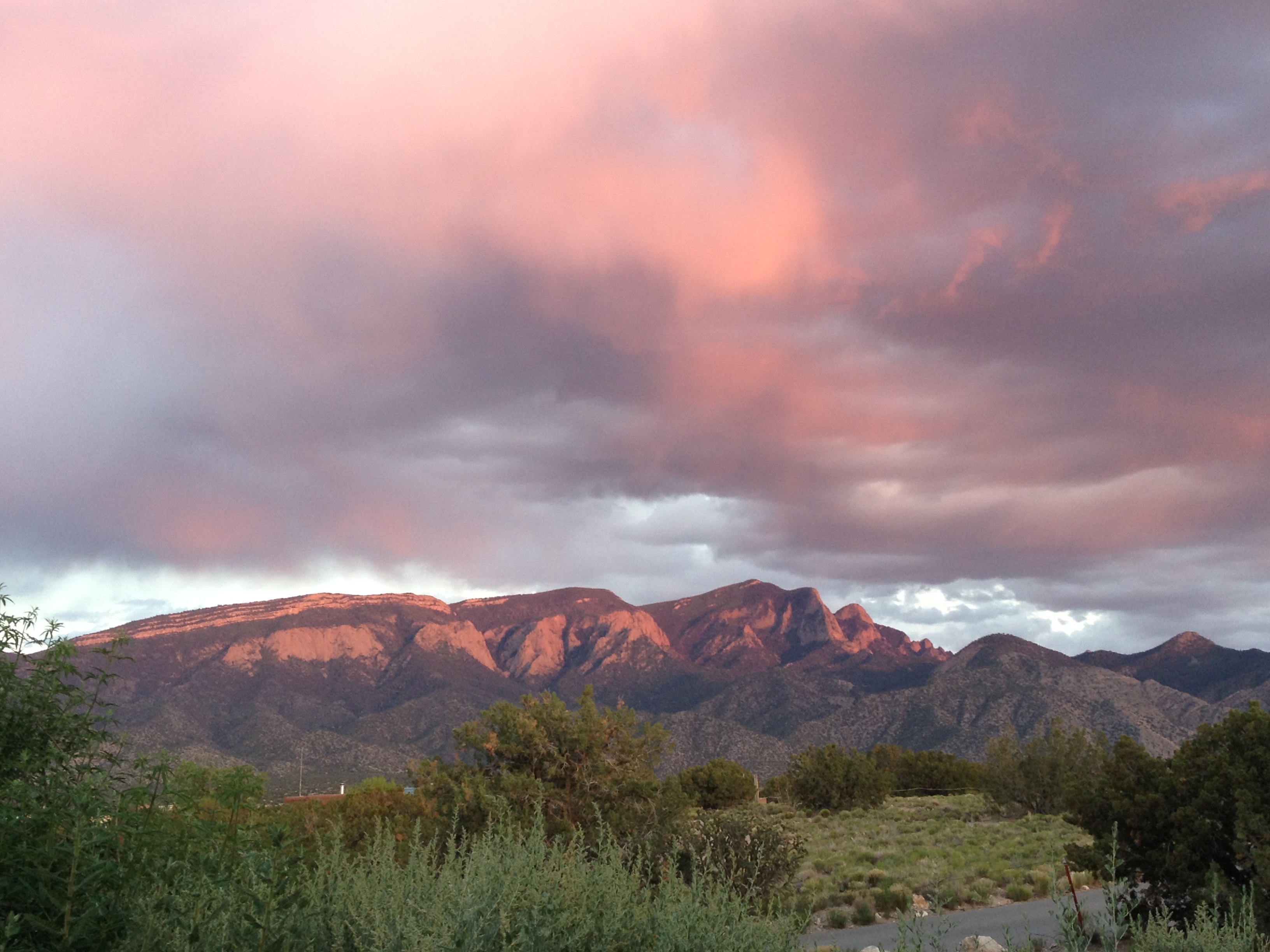
Checking the mountain so many times a day attunes us to its moods, its changing light. I’ve heard that living next to a mountain, one learns to tell time by its quality of light.
And we can instantly spot the changes in its foliage. Last week we noticed fresh green on the side of North Peak—aspens leafing out. Aspens’ spring raiment is a feast for the eyes. So we picked a day and headed up the mountain for one of our favorite hikes. Maybe we’d catch a glimpse of calypso orchids as well.
Calypso sprouts
From the parking lot at the Ellis Trailhead, we slipped into the woods on the first spur and headed toward the Survey Trail. At just the spot where we’d found them last year were the starts of the orchids, two telltale leaves at ground level, each with a sprout about three inches high:

It will take another week or so for the flowers to appear. We’ll just have to go back and visit them again.
Heading down the trail
The trail begins above 10,000 feet and slopes gently downward for nearly three miles. The morning was quiet and sunny—perfect for hiking.
Imagine a soundtrack throughout—the plaintive song of the hermit thrush echoing at the treetops, plus warblers and chickadees. Hermit thrushes accompanied us the whole day, each of them now asking a question, now answering it, as if endlessly seeking and endlessly finding.
And that smell! Fresh forest air, damp humus—ahhhhhh! A place where the lungs relax and open with no effort.
Before long we spotted aspens offering fresh leaves to the sky:
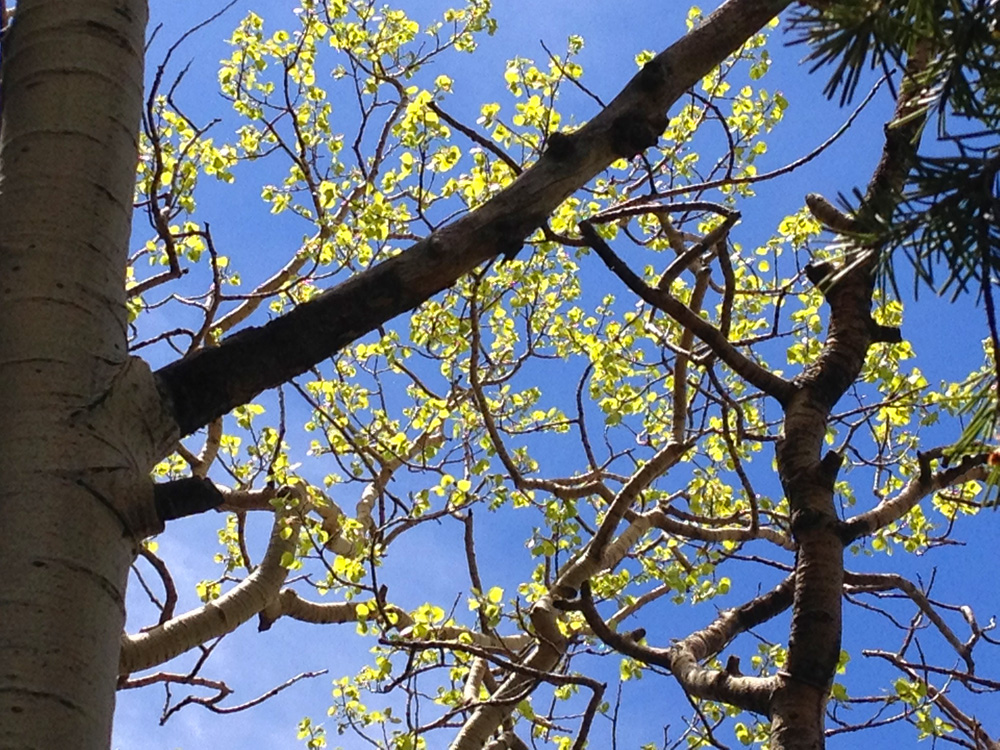
Finding just a few young leaves and sniffing the tantalizing fresh scent of aspen whetted our appetites for more.
We hadn’t planned on doing the whole six-mile loop—this was the first hike of the season at 10,000 feet—but right about then we decided to go for it. Calling to us was the stunning overlook at the halfway point—for me, the chance to stare straight into a mountainside of fresh green aspen on the flank of North Peak. Tim looked forward to the view of Albuquerque nearly a vertical mile below. For him, the higher the overlook, the better.
Farther down the trail we spotted Canada violets (Viola canadensis):
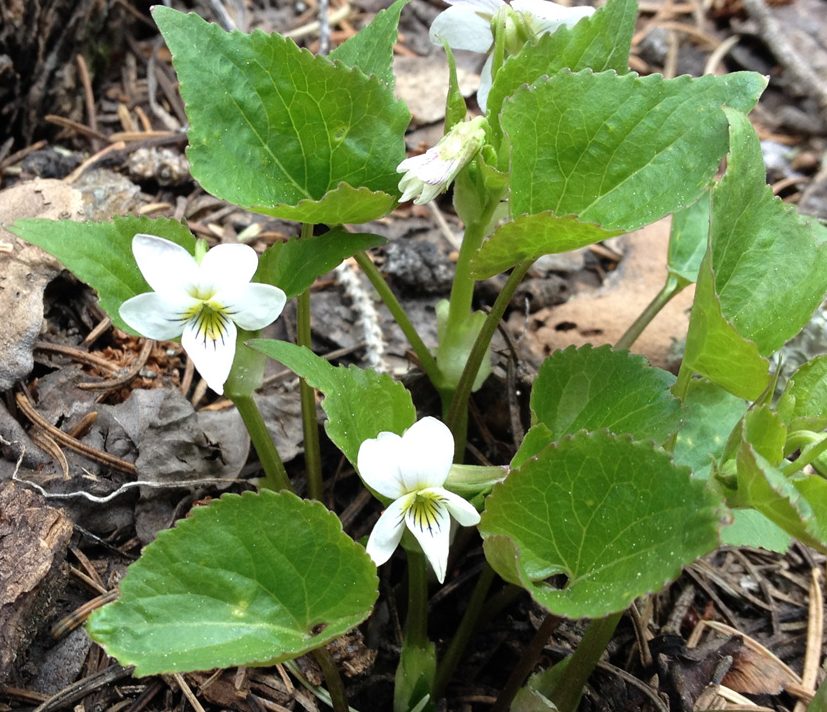
And chiming bells (Mertensia), from the borage family. I’m told we have Franciscan chiming bells here (Mertensia franciscana), though I’ve only seen very short plants—shorter than ten inches—so am wondering if these are the dwarf variety (Mertensia fusiformis):

Many trees had fallen over winter, including this one, ripped at its base into see-through shreds:
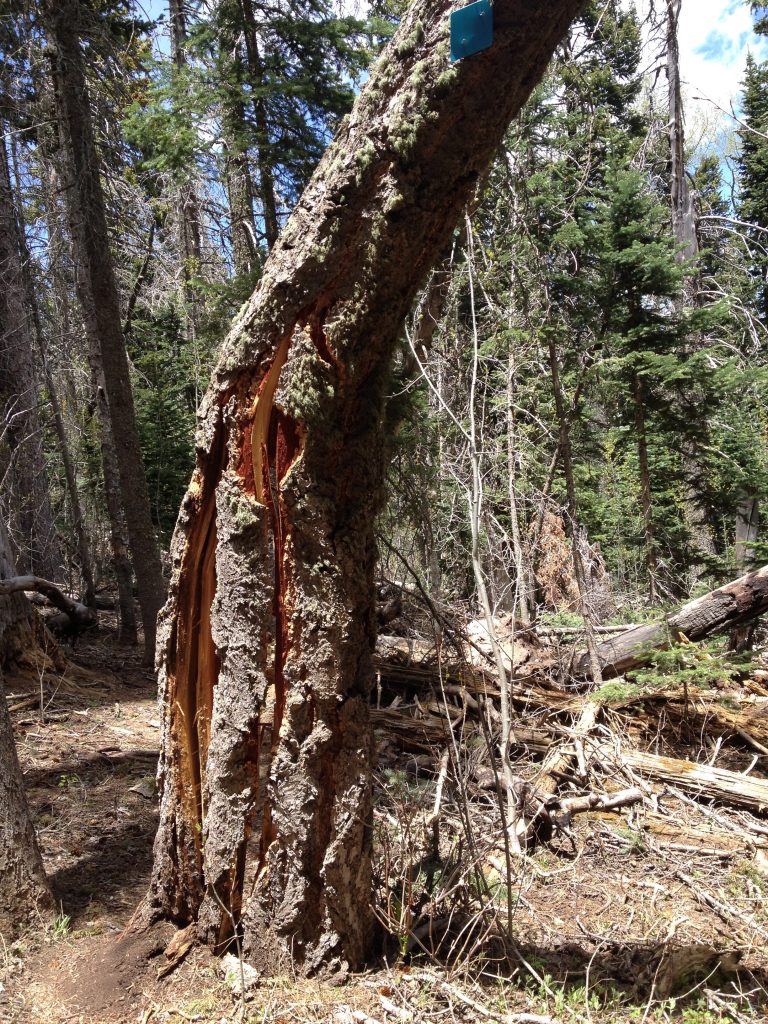
Painterly bark
Tree bark is fun to frame into abstract compositions, as if in a painting. This unusually geometric pattern caught my eye. Anyone recognize it? Spruce and fir predominate at this altitude, but this one?

And this one—no, it’s not cottonwood, though it has similar thick structures with deep fissures. It’s an aspen tree, an extremely tall, old tree, and this is the bark on the lowest ten feet of it:
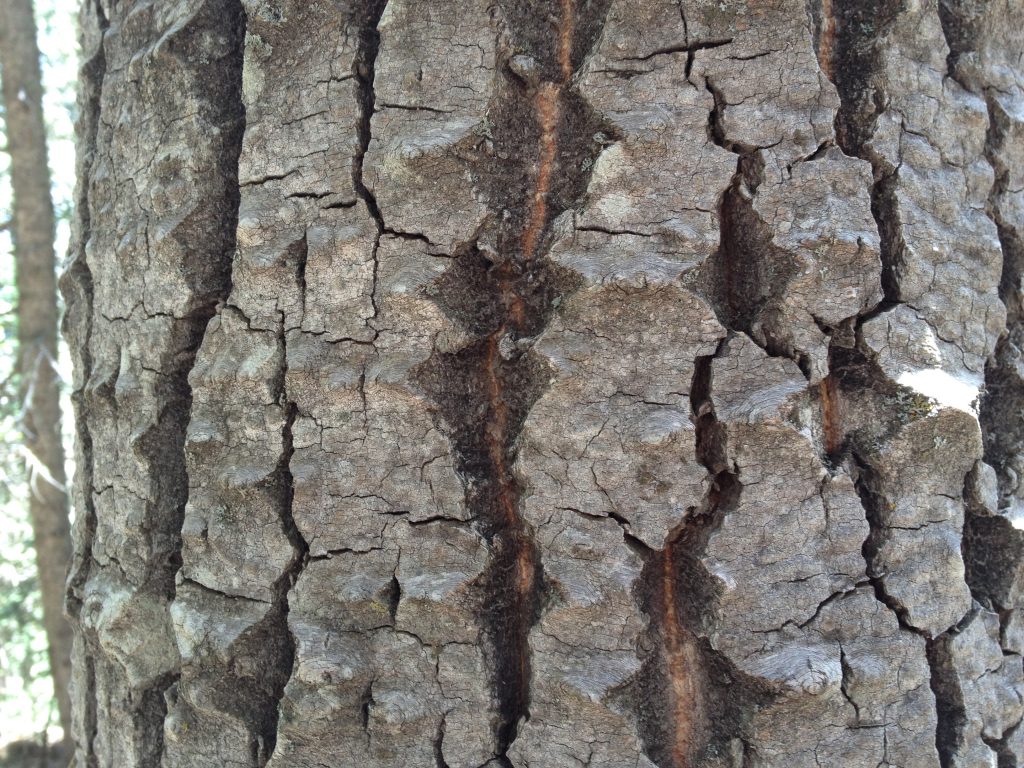
Overlook next to North Peak
Finally we arrived at the overlook—a flank of young aspens to our left, plus the high, far view that Tim so loves. This is the mountainside we gaze at so often from our house, and it’s always a thrill to stand next to it.
We plopped under some fir trees and dug into our lunches. But we didn’t stop for long. Three miles of uphill hiking at 10,000 feet awaited us, and a gray cloud had begun to form overhead. It was time to get off the mountain.
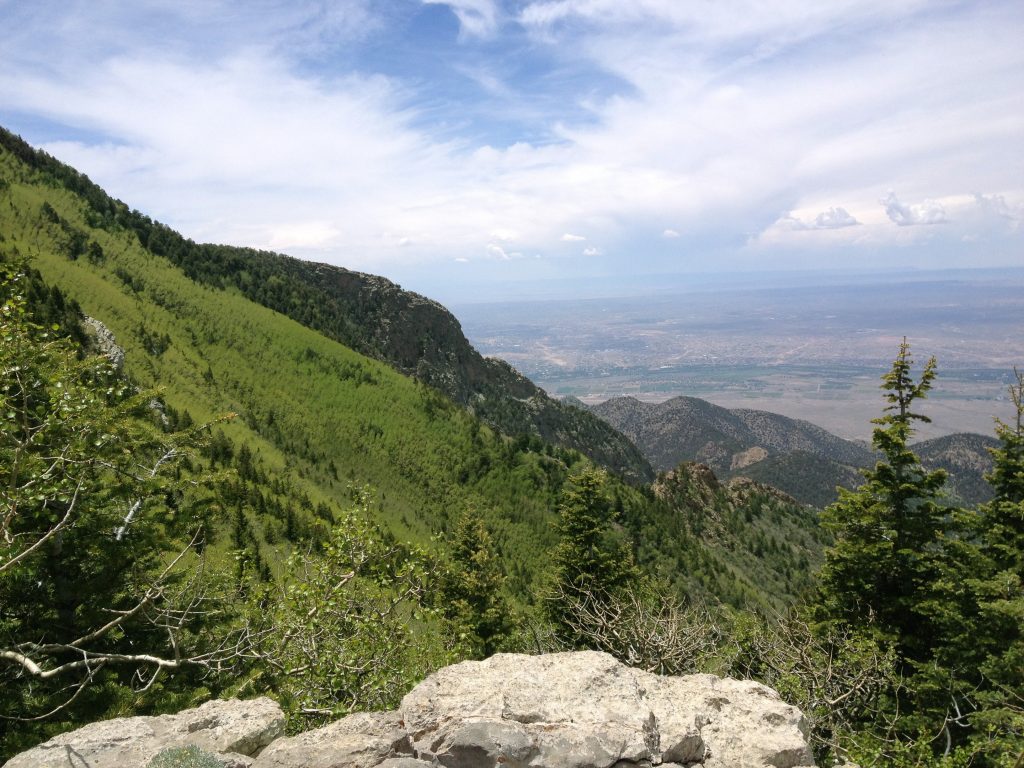
The Crest Trail
We made our way back uphill on the Crest Trail, serenaded all the way by hermit thrushes:
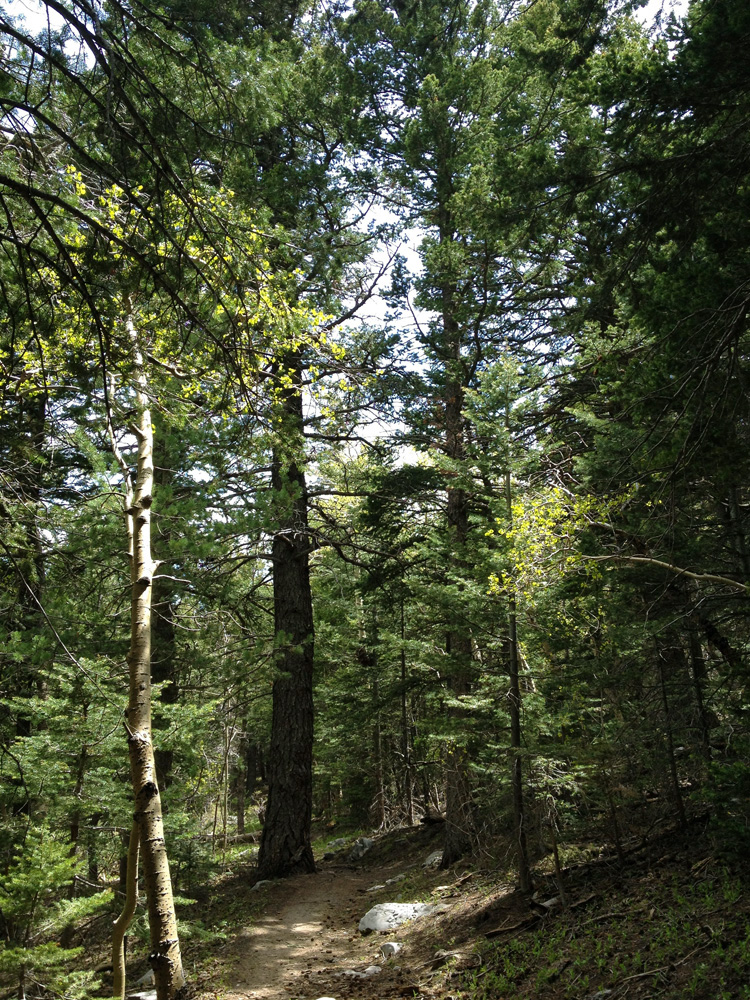
By the end of the trail, we were hurrying as fast as we could, for the gray cloud overhead was emitting a few low and threatening growls. We’ve been surprised before by lightning striking way too close for comfort, and we didn’t want to repeat the experience.
Arriving safely at the car, we breathed deeply once more of the fresh, invigorating air and promised to return next week.















Thank you for sharing your hike with all of us through these beautiful photos! I would love to walk with you!
Lovely, lovely!!
Thank you, Cindy! Come down and visit, and we can show you the Sandias! It’s always such a treat, and so healing, to slip into the fresh, cool woods—especially when it’s turning hot down here on the plateau. Where you live, you know the power of mountains too!
Oh Priscilla. Your writing helps me to remember how much I love our home view we share with you and Tim. I loved that you see the beauty and the abstract wonder of the geometries of bark. Here I thought I was the only one that stares at that repeating wonderment. One more viewpoint we share. Gratitude my friend.
Thank you, Kate! Enjoy the wonders of your summer adventures, and we’ll go bark watching together when you return. Wouldn’t that be fun? Looking forward to sharing more wonders with you! Sending hugs across the miles.
Very happy to have discovered this blog, I have lived in remote places and have felt the immense gifts nature, living closely with wdlife, offers on many levels of one’s beingness within it. I am interested in other peoples personal experiences with spirit and nature, it seems that humans will be losing aspects of themselves as more and more wildlfe and nature is destroyed. If u agree in what way would this be true?
Hi, Angelique, thanks for dropping by. I too think we can’t survive without the other creatures. They constitute a community that was in place before human beings arrived on the scene, a community of nature that operates by its own rules of life and death. If we disrupt those relationships and disturb the community, we spell our own death. They can survive without us—and did, for millennia. Because we are the newcomers, we can’t survive without them.